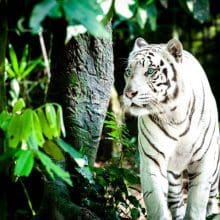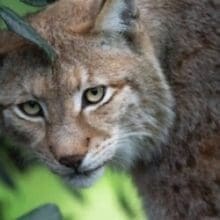What Are the Predators of Bobcats in their Natural Habitat?
Predators of Bobcats
Bobcats are fascinating creatures that inhabit various regions of North America. These medium-sized wild cats are known for their elusive nature and adaptability to different environments. While they are skilled hunters themselves, bobcats also face threats from other predators in their natural habitat. Understanding the predators of bobcats is crucial for comprehending the dynamics of their ecosystem and the challenges they face in their daily lives.
The Bobcat: A Brief Overview
Before delving into the predators of bobcats, it is essential to have a basic understanding of these remarkable animals. Bobcats (Lynx rufus) are native to North America and are found in a wide range of habitats, including forests, deserts, swamps, and even suburban areas. They are solitary creatures, primarily active during twilight and nighttime.
Bobcats are opportunistic hunters, preying on a variety of animals, including rabbits, rodents, birds, and small ungulates. Their hunting techniques involve stealth, patience, and a burst of speed to capture their prey. However, despite their hunting prowess, bobcats are not invincible and face threats from other predators in their environment.
Predators of Bobcats
While bobcats are skilled hunters, they are not at the top of the food chain in their natural habitat. Several predators pose a threat to bobcats, and their interactions shape the delicate balance of the ecosystem. Here are some of the main predators of bobcats:
1. Coyotes
Coyotes (Canis latrans) are one of the most significant predators of bobcats. These highly adaptable canids have expanded their range across North America and often share habitats with bobcats. Coyotes are larger than bobcats and often compete for similar prey. In some cases, coyotes may even kill bobcats to eliminate competition or as a territorial display.
2. Mountain Lions
Mountain lions, also known as cougars or pumas (Puma concolor), are apex predators that can pose a significant threat to bobcats. These large cats are capable of taking down prey much larger than themselves, including deer and elk. While bobcats generally avoid direct confrontations with mountain lions, they may fall victim to them if they encroach on their territory or become vulnerable due to injury or illness.
3. Wolves
In regions where wolves (Canis lupus) coexist with bobcats, they can also be a potential threat. Wolves are highly efficient predators that hunt in packs and have a wide range of prey, including ungulates. While bobcats are not a primary target for wolves, they may become vulnerable if they are injured or weakened.
4. Bears
Bears, particularly black bears (Ursus americanus), can occasionally prey on bobcats. Although bears are primarily herbivorous, they are opportunistic omnivores and will not hesitate to take advantage of an easy meal. In some cases, bears may scavenge on bobcat carcasses or even actively hunt them if the opportunity arises.
5. Humans
While not natural predators, humans have a significant impact on bobcat populations. Habitat destruction, urbanization, and hunting can all pose threats to bobcats. Illegal hunting and trapping for their fur or as a result of human-wildlife conflicts can further endanger bobcat populations.
Implications for Bobcat Conservation
The presence of predators in the natural habitat of bobcats has important implications for their conservation. Understanding the interactions between bobcats and their predators can help wildlife managers develop effective conservation strategies. Here are some key considerations:
- Protecting habitat: Preserving and maintaining suitable habitats for bobcats is crucial to ensure their survival. By protecting their habitats, we can help reduce the impact of predators and provide bobcats with the resources they need to thrive.
- Managing human-wildlife conflicts: Encounters between bobcats and humans can lead to negative outcomes for both parties. Implementing measures to minimize conflicts, such as secure livestock enclosures and public education, can help reduce the need for lethal control of bobcats.
- Conserving prey species: Ensuring the availability of prey species is essential for bobcat survival. Conservation efforts should focus on maintaining healthy populations of small mammals and other prey species that bobcats rely on.
- Promoting coexistence: Recognizing the ecological role of predators, including bobcats, is crucial for fostering coexistence between humans and wildlife. By promoting tolerance and understanding, we can create a more harmonious relationship with these magnificent creatures.
Conclusion
Predators of Bobcats: Bobcats, despite their hunting prowess, face threats from various predators in their natural habitat. Coyotes, mountain lions, wolves, bears, and even humans can impact bobcat populations. Understanding these predator-prey dynamics is essential for effective bobcat conservation. By protecting their habitats, managing human-wildlife conflicts, conserving prey species, and promoting coexistence, we can ensure the survival of these remarkable creatures and maintain the delicate balance of our ecosystems.
Read More About Bobcats From Wikipedia




